Idea Analysis: Key to Successful Implementation of Innovations
Idea analysis is a systematic process that scrutinizes creative concepts or proposals to assess their feasibility, relevance, and potential for successful implementation. This process involves evaluating various factors, including the availability of resources, alignment with objectives, and the potential impact on a project’s success. The primary aim is to identify, select, and prepare the most promising ideas for effective implementation.
Idea Analysis in a Nutshell
- Meaning and Application: Ideas are formulations that place an innovative performance within a certain temporal or otherwise determined framework and highlight their respective advantages or disadvantages. Idea analysis, like trend analysis, offers the evaluation of ideas by individual users to query the opinions of as many participants as possible.
- Conducting the Analysis: The analysis and visualization of ideas using radar or portfolios and grouping ideas into clusters and linking them with other elements.
- Strengths of the Method: The strengths of idea analysis lie in the systematic and cooperative evaluation of ideas and the open exchange of subjective value judgments.
- Weaknesses and Challenges: Ideas must be formed within a temporal or otherwise established framework, and advantages and disadvantages must be equally highlighted. Additionally, selecting evaluation criteria that are applicable to all selected ideas to ensure comparability can pose challenges.
Fundamentals of Idea Analysis
At its core, idea analysis requires a clear definition of the goals and criteria that will guide the evaluation of ideas. Establishing precise criteria—such as feasibility, level of innovation, and resource requirements—is critical. This process involves a systematic assessment and weighting of these criteria to facilitate an objective and thorough examination of each idea. The culmination of this process is the selection and prioritization of the most viable ideas, setting the stage for their successful transformation into actionable projects.
Idea Evaluation: Criteria and Stages for Effective Idea Analysis
Idea evaluation is a pivotal component of the idea analysis process, utilizing predefined criteria to determine the viability and quality of ideas. This multifaceted process begins with an initial, broad selection of ideas, advancing through more rigorous scrutiny based on criteria such as cost-benefit analysis, level of innovation, and resource availability. The culmination of this process is the careful selection of the foremost ideas, grounded in their comprehensive evaluation, to guide informed implementation decisions.
The Idea Analysis Process
The idea analysis framework is a meticulous approach designed to evaluate and select innovative proposals effectively. It unfolds across several distinct stages:
1. Idea Development: Initiate by gathering a diverse array of ideas from various sources, including brainstorming sessions, contributions from employees, and external suggestions.
2. Idea Description: Articulate each idea with clarity and precision, ensuring a mutual understanding among team members.
3. Criteria Definition: Establish the evaluation criteria, which typically include feasibility, cost implications, level of innovation, associated risks, and strategic fit.
4. Idea Evaluation: Conduct thorough assessments of each idea against the established criteria, employing either individual evaluations or collaborative discussions to ensure objective analysis.
5. Ranking of Ideas: Organize the ideas in a ranked order based on their evaluations to identify the most promising proposals.
6. Decision Making: Decide on the best ideas for implementation, utilizing further discussions, voting mechanisms, or executive input to make well-informed choices.
7. Implementation Preparation: Develop a comprehensive action plan for the chosen ideas, detailing resource allocation, setting milestones, and anticipating potential hurdles.
8. Feedback and Adjustment: Implement a dynamic feedback loop to continuously monitor the implementation process, making adjustments as necessary to address new challenges or incorporate changes. This step ensures adaptability and the sustained relevance of the implemented ideas.
An effective idea analysis process is instrumental in pinpointing the most promising ideas, optimizing resource use, and enhancing the likelihood of project success. However, this process does not come without its challenges, each affecting the analysis’s outcome and the implementation of ideas.
Challenges in Idea Analysis
Idea analysis can encounter various challenges that can affect the process:
1. Subjectivity: The evaluation of ideas is often influenced by individual biases, as different evaluators bring their perspectives and preferences to the table. This subjectivity can lead to disagreements, potentially compromising the objectivity required for a fair analysis.
2. Time and Resource Constraints: The comprehensive evaluation of a vast array of ideas demands significant time and resources. Constraints in these areas may force a cursory evaluation of ideas, potentially resulting in the oversight of viable concepts.
3. Lack of Data and Uncertainties: Evaluating ideas often involves grappling with uncertainties related to future market trends, technological advancements, and other external factors. The lack of reliable data can can make this evaluation more complex and speculative.
4. Resistance to Change: Organizational inertia and resistance to new ideas or changes can pose a significant barrier to the acceptance and implementation of novel ideas, even when they hold substantial promise.
5. Lack of Diversity in Idea Generation: A homogenous pool of ideas, often the result of limited sources of input, can stifle innovation. The absence of diverse perspectives and creative approaches can detract from the quality and breadth of ideas generated.
6. Unclear Goals and Criteria: The absence of well-defined goals and transparent evaluation criteria can lead to inconsistent and inaccurate idea analysis outcomes. This lack of clarity can also affect the legitimacy and acceptance of the decisions made.
Successfully addressing these challenges requires a careful process, clear communication, the inclusion of various perspectives, and the ability to adapt flexibly to unforeseen circumstances.
The Role of Technology in Idea Analysis
Technology significantly enhances the idea analysis process, making it more efficient and accessible. Collaboration platforms, data analysis tools, and artificial intelligence (AI) play key roles in accelerating the collection, organization, and evaluation of ideas. These technological solutions improve transparency, objectivity, and the management of ideas throughout the analysis process.
The Role of Idea Analysis in Digital Transformation
Idea analysis is pivotal in driving digital transformation, helping organizations to identify and prioritize innovative concepts that can lead to significant digital advancements. By systematically evaluating ideas, companies can formulate effective digital strategies, optimizing processes, enriching customer experiences, and innovating new business models. This process cultivates the innovation spirit essential for a successful digital transformation.
Frequently asked questions and answers
Idea analysis within a business framework is a methodical process aimed at evaluating, selecting, and developing innovative proposals or concepts. It involves assessing ideas against various criteria, including feasibility, cost-benefit analysis, level of innovation, and strategic fit, to pinpoint the most promising options. The primary objective is to optimize resource use and discover innovative solutions that support business goals.
Analysis is integral to innovation management, as it aids in identifying the most viable and promising ideas. Through systematic review of innovation proposals, businesses can allocate resources more judiciously and ensure alignment with strategic objectives. This structured approach to innovation enhances a company’s capacity for introducing novel ideas, thereby bolstering its competitive edge and ensuring sustained success.
Yes, specialized tools, such as the Foresight Strategy Cockpit (FSC), are designed to streamline the idea analysis or innovation process within organizations. These tools facilitate a structured evaluation of ideas against set criteria, enhance team collaboration, and assist in prioritizing ideas with the greatest potential. Utilizing the Foresight Strategy Cockpit enables companies to efficiently identify and implement leading innovations, thus improving their innovation capabilities and gaining a competitive advantage.
Sources:
- De Bono, E. (1994). Thinking course. London: BBC.
- Amelingmeyer, J. (2013). Wissensmanagement: Analyse und Gestaltung der Wissensbasis von Unternehmen. Springer-Verlag
- Schwarz, E. J., Krajger, I., & Dummer, R. (2012). Innovationskompass für klein-und mittelständische Unternehmen: Neue Ideen finden und entwickeln. Linde Verlag GmbH
- Voigt, K. I., & Brem, A. (2005). Integriertes Ideenmanagement als strategischer Erfolgsfaktor junger Technologieunternehmen. Integriertes Ideenmanagement-Betriebliche und uberbetriebliche Aspekte unter besonderer Berucksichtigung kleiner und mittlerer Unternehmen. Gabler, Wiesbaden, 175-200.
- Beyer, G., & Seidel, G. (2006). Gestaltung eines systematischen Ideenmanagements. Innovationskultur und Ideenmanagement. Strategien und praktische Ansätze für mehr Wachstum, hrsg. v. Tom Sommerlatte, Georg Beyer und Gerrit Seidel, Düsseldorf, 379-403.



